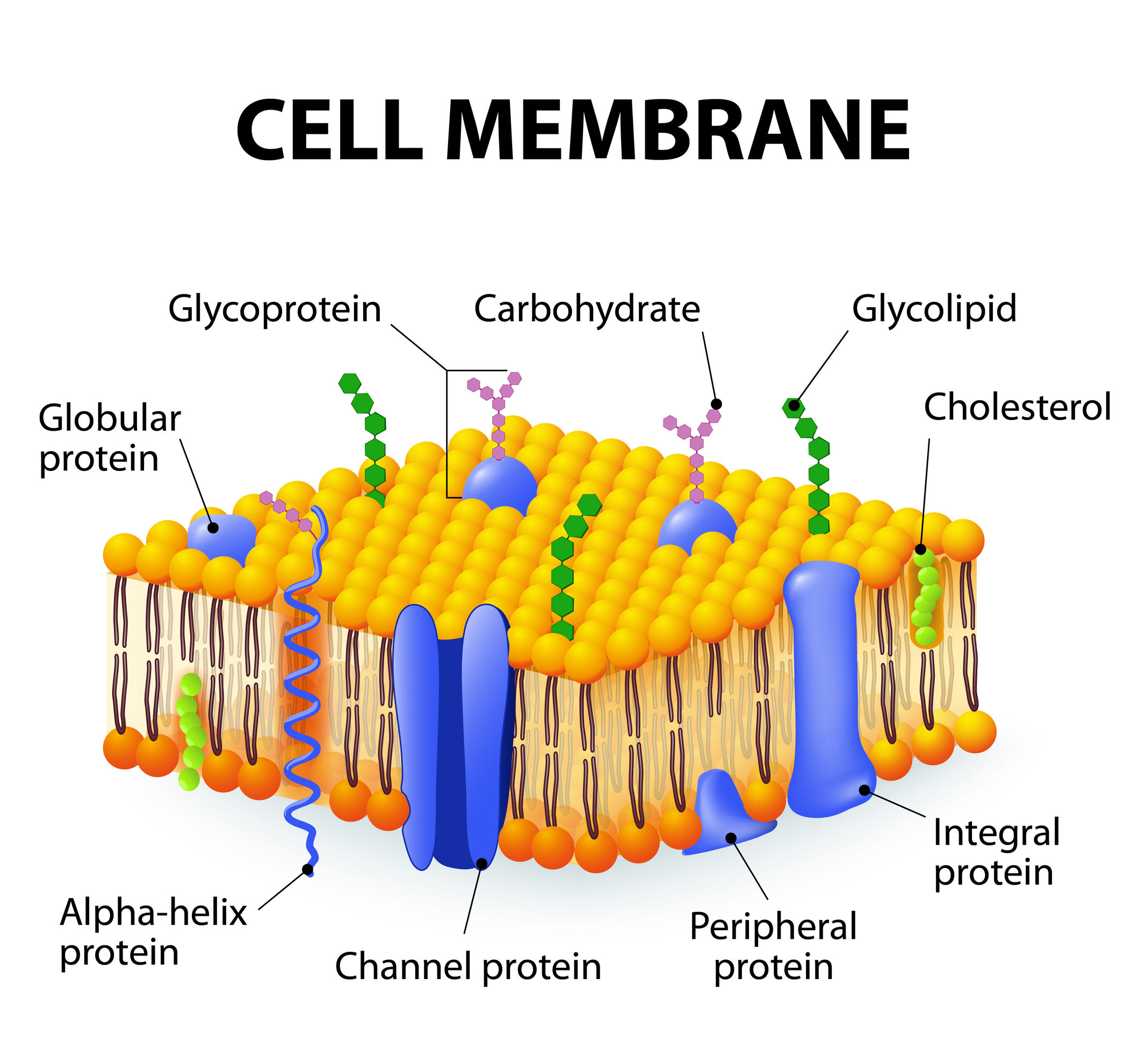Eukaryotes - Cell Membrane Composition
Description:
Electron microscope helped to reveal the detailed structure of the cell membrane. The study of the structure of the cell membrane was mostly performed in human red blood cells (RBCs).
Cell membrane is composed of lipids which are arranged in a bilayer. The lipid molecules have a polar hydrophilic head and a non-polar hydrophobic tail. The polar head of the lipids is towards the outer sides and the hydrophobic tails lie towards the inner parts of the cell membrane. The tails are hydrophobic, so this lipid bilayer structure ensures that the hydrophobic tails are protected from the aqueous environment.
Cell membranes also possess proteins and carbohydrates. Ratio of protein and carbohydrates varies in different cell types.
Membrane Proteins
Membrane protein may be of three types −
- Peripheral protein − These proteins lie on the surface of membrane.
- Integral proteins − These proteins are partially or totally buried.
- Transmembrane proteins − These proteins transverse through both the inner and outer membrane.
Fluid Mosaic Model
Singer and Nicolson in 1972 deduced the structure of the cell membrane which came to be known as the fluid mosaic model. According to this model the quasi-fluid nature of lipid enables lateral movements of proteins within the overall bilayer.
The ability of molecules to move within the membrane is known as fluidity.


